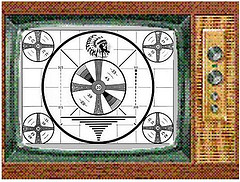Internet TV still isn't ready for prime-time


That's why I'm not happy to report that for many people, TV over the Internet still isn't good enough. Oh, it's not the video quality. With a high-speed connection, like my own Charter cable 25Mbps (Megabits per second) connection, 720p HD video comes in just fine. Oh, in the future, it may be another story. There's not enough Internet to go around for everyone to watch TV over the net. Even now, Netflix alone is taking up an insane amount of available Internet bandwidth, but that's not the problem I see most people having with the currently generation of video streaming services.
No, the real problem is in content. As most of you know, most sports aren't available over the Internet. There are some exceptions, such as ESPN3, which I see is now showing—I'm not making this up—high school field hockey. And, as a baseball fan, I like that I can watch baseball both on my PC and on my Roku via MLB.TV. Past that though, the pickings get scarce.
That's old news though. What really made me aware of what a big problem content is on the Internet was a series of articles by my old friend Tristan Louis on just what was, and wasn't available as video-on-demand (VoD) over the Internet. Louis looked at the most popular 100 movies of 2010; the top 50 U.S. TV shows in 2010; and the top movies of the last few years.
Would you guess how many of them are available for display on your TV? Out of the top 100 movies of 2010, as of late January 2011, 74 of them were available on DVD, but only 48 were available on Amazon Video on Demand; 46 on Vudu; and Apple's iTunes Store; and a lousy 10 on Netflix. Many popular recent movies, like Red and The Book of Eli, weren't available on any service.
Previous years weren't much better. Avatar? No The Hangover? Nope. Sherlock Holmes? Elementary my dear Watson! No.
Even more annoying, even when they are available, they're often available only as one-time rentals. Want to re-watch an old favorite? Unless you're lucky enough for it to be on Netflix, it will be another couple of bucks per viewing.
That's lousy, but it's not much better when it comes to television shows. Out of the top 50 TV series, iTunes does the best with at least some episodes of 78% of the most popular shows, followed by Amazon with 56%; Hulu Plus with 24% and Netflix with a dismal 4 (four!) percent. The more popular the show, the less likely it is to be available. For example, of the top five TV shows-—NCIS, The Mentalist, CSI, NCIS:LA and (oh America how can you watch this!?) Two and a Half Men--only the last can be rented.
These numbers don't tell the whole story. Many of those shows on Amazon or iTunes are only available for purchase.
What all this boils down to is that if you want the most popular movies and TV shows for a flat-fee, video on the Internet still isn't for you. I've thought that Internet VoD would kill off first over-the air (OTA) TV and then satellite sometime soon. I was wrong.
Besides the technical issues of delivering enough bandwidth, the real problem is there isn't enough of the content that most people want to see. Internet TV is speeding up the death of the video store, but conventional television broadcast methods still have many more good years left in them.